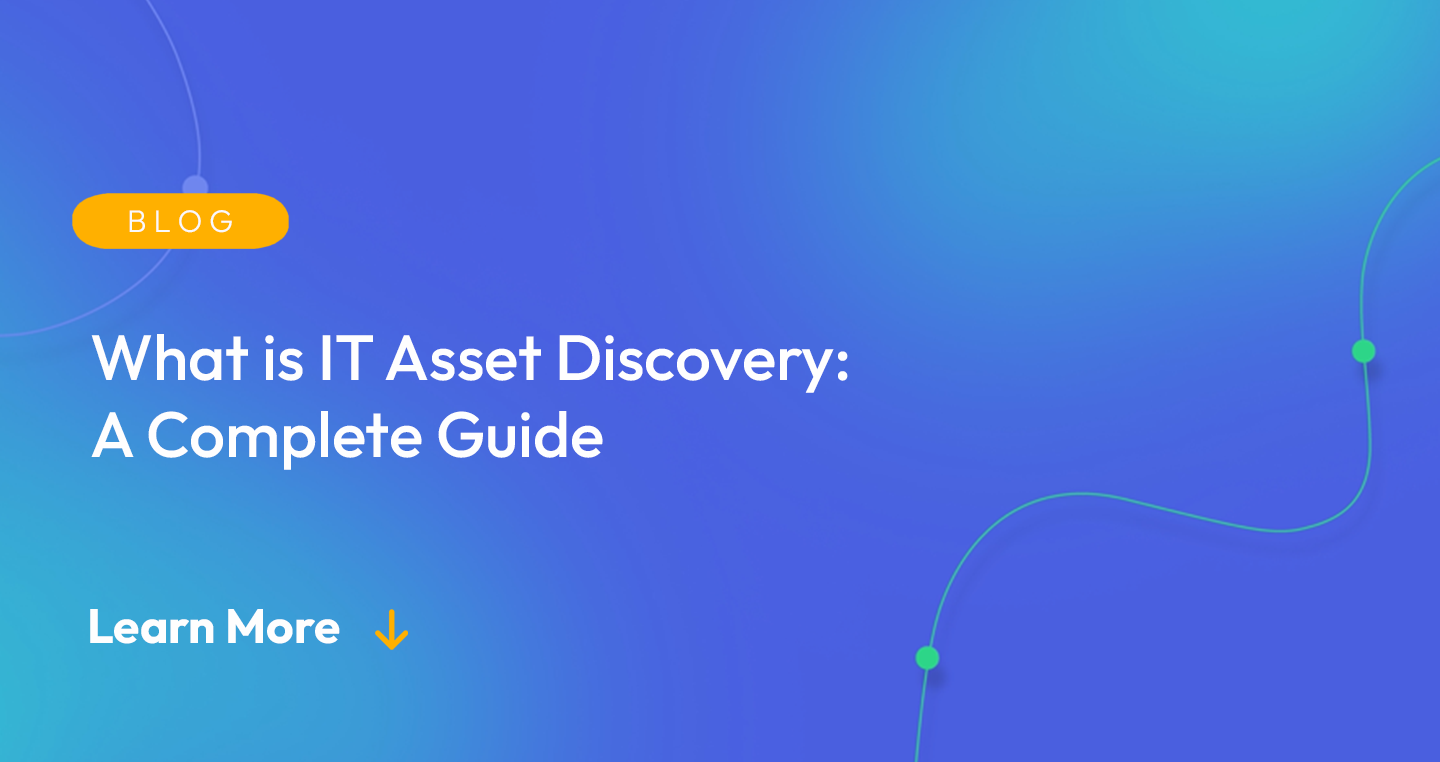
Previously a somewhat trivial and menial task, IT asset discovery is now one of the most pressing challenges companies face from a cybersecurity perspective. Key changes introduced by digital transformation initiatives, cloud adoption, smart IoT devices, and remote work arrangements make it harder than ever to find, catalog, and monitor all of your IT assets.
The problem is that when there are assets you don’t know about, security breaches become far more likely because those assets lack any protections or monitoring. This article provides a complete guide to IT asset discovery in the modern IT ecosystem.
What is an IT Asset?
To really understand the challenge at hand in discovering all of your IT assets, it’s important to get some clarity on what an IT asset actually is. When you think of an IT asset, it’s understandable that you might limit your thinking to physical things like employee workstations, servers, printers, and data centers.
But the scope of what counts as an IT asset is far broader than just hardware. An IT asset is any resource in an information technology environment that you either own or control and that produces economic value. Examples beyond what’s obvious include:
- All software licenses, including those for cloud-hosted SaaS apps that different departments use, sometimes without the knowledge of central IT teams
- Data that you store either on-premises or in cloud storage infrastructure
- Code that developers create and often host on repositories like GitHub
- SSL certificates that help to encrypt communications and sensitive data
- Company websites and subdomains
- Virtual servers like VMware and cloud instances
- Smart connected devices like thermometers, sensors, and actuators
What is IT Asset Discovery?
IT asset discovery is a process that locates and catalogs all of your company’s IT assets. This should include tools and methods to establish baseline discovery of devices, software, and data. Ideally, IT asset discovery should unearth additional useful information about each asset, such as its owner, manufacturer and serial number where applicable, where it’s located, and its version.
For networking devices, code, and software, data about their configuration can also be very useful. Software asset discovery should ideally provide info about licenses, or for custom in-house apps, the composition of that software and any libraries or frameworks it depends on.
By engaging in IT asset discovery, your company can build an actionable dataset that provides significant data which ends up being useful for many purposes. IT managers can see who’s logged on to what device and what devices need rebooting or what apps require upgrades or license renewals.
How Does Modern IT Asset Discovery Work?
The traditional approach to IT asset discovery depended on IT teams manually discovering as many assets as possible and often using spreadsheets to document the results. Not only is this approach time-consuming, but it is also prone to becoming quickly outdated.
In the constant flux that defines modern IT ecosystems, assets get newly created, abandoned, and go through changes in their state all the time. Asset discovery processes that use point-in-time snapshots simply won’t suffice, especially with larger numbers of Internet-facing assets than ever.
Modern IT asset discovery depends heavily on automation and continuous discovery, which often comes from the assistance of dedicated tools that can scan for and catalog the assets present in your environment. One example is Nmap, an open-source network scanner that finds hosts on your network and open ports.
Usually, a slew of tools is required for a comprehensive inventory that also finds unsanctioned shadow apps in the cloud and other tricky-to-track assets. Statistics pointing to the risks of shadow IT include the fact that shadow IT cloud usage is 10x the size of known cloud usage, and 35% of employees say they need to work around their company’s security policy to get their job done.
In recent years, the IT asset discovery landscape has evolved to accommodate the emergence of external attack surface management as a key security consideration. Dedicated attack surface management solutions help companies find and map their risky Internet-facing assets, including cloud environments and online code repositories. Tools typically use AI algorithms and leverage data from many sources, including open-source intelligence (OSINT) feeds to identify known and unknown assets.
With a unified view of the external attack surface from one tool, it becomes easier to discover and track the state of your Internet-exposed assets. These external assets are by far the most likely type of asset to undergo swift changes in their number or state, as opposed to the relatively static nature of traditional on-premise IT assets like printers, servers, and workstations that can be more easily discovered and monitored.
Benefits of Comprehensive IT Asset Discovery
So, having established that comprehensive IT asset discovery involves finding all IT assets (software, hardware, digital data) beyond just what’s installed on your premises, what are the benefits of this kind of in-depth approach?
Improved security
It’s impossible to secure assets that you don’t know about. Better cybersecurity is perhaps the most compelling reason for comprehensive IT asset discovery. Threat actors constantly probe from the outside in for exposed or vulnerable Internet-facing assets that they can compromise.
When you opt for ongoing IT asset discovery that uses as much automation as possible, you uncover unknown assets at the pace needed to secure them. This even extends to the risky user endpoint laptops and smartphones that remote workers use to connect to your environment. Getting rid of asset blindspots helps reduce the likelihood of suffering a data breach or other serious cybersecurity incident.
Compliance with regulations
Bearing in mind that the data stored in your IT environment is an asset, it’s also worth a reminder how a lot of data collected today has strict protections in the form of data privacy regulations. Whether it’s HIPAA, GDPR, or PCI DSS, the valuable data you process and store about users most likely comes with compliance obligations.
When you don’t discover all of this sensitive data in your environment, you can end up being out of compliance with regulations, such as by failing to encrypt data stores. There are also possible cases where users deploy unsanctioned SaaS apps that process protected data but those apps aren’t compliant with the necessary rules. There is also the issue of software license compliance—discovering all software and the licensing information about each app helps ensure you don’t run afoul of licensing rules.
Optimize costs
An accurate and complete IT asset inventory is also helpful for cost optimization. Like any other business department, IT works under budget constraints. When you have an up-to-date IT asset inventory, you can make better decisions relating to how this budget is allocated. For example, you might notice conflicting apps that serve the same business purpose, which you can then narrow down to a single app and reduce unnecessary licensing costs.
How Flare Helps with IT Asset Discovery
Flare is a high external risk monitoring platform that helps meet the pressing need for rapidly discovering all publicly facing assets. As more tools and services get added to an ever-changing IT ecosystem, ongoing IT asset discovery for all external assets gets trickier but simultaneously more vital to implement.
Flare works behind a single pane of glass to monitor places like GitHub for source code leaks, identify open storage buckets, and even monitor the clear and dark web for leaks of valuable data assets, such as personally identifiable information (PII).





